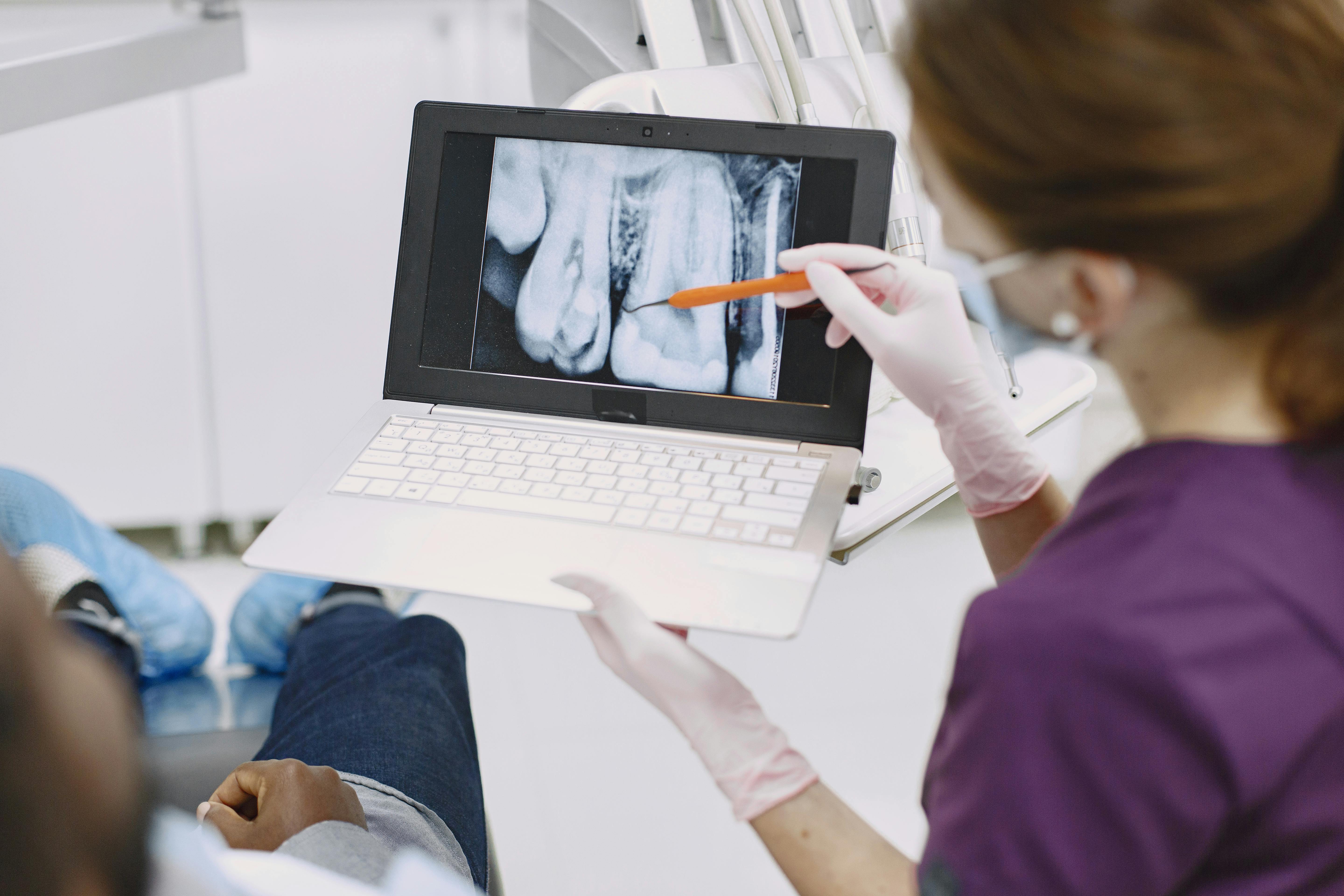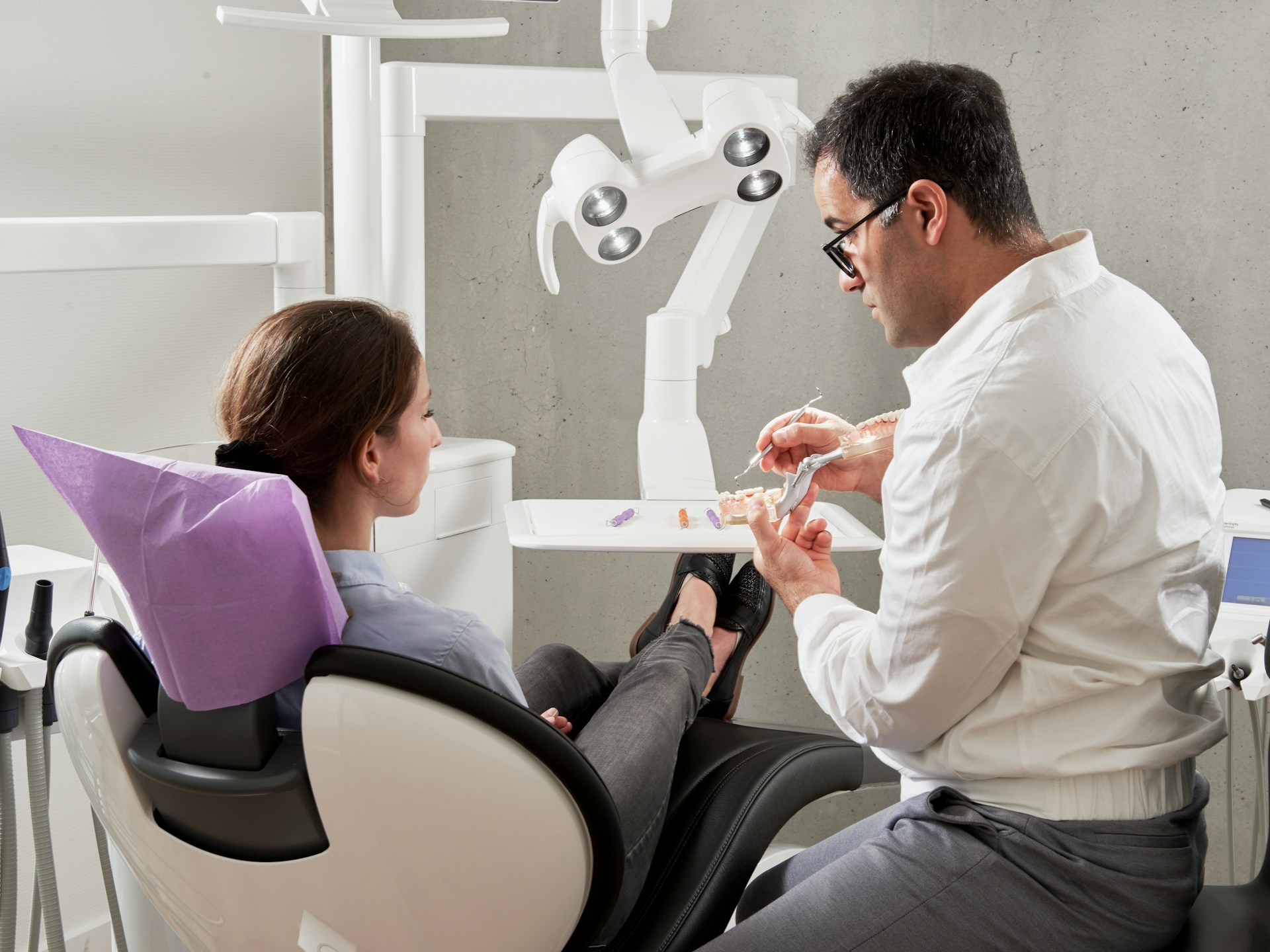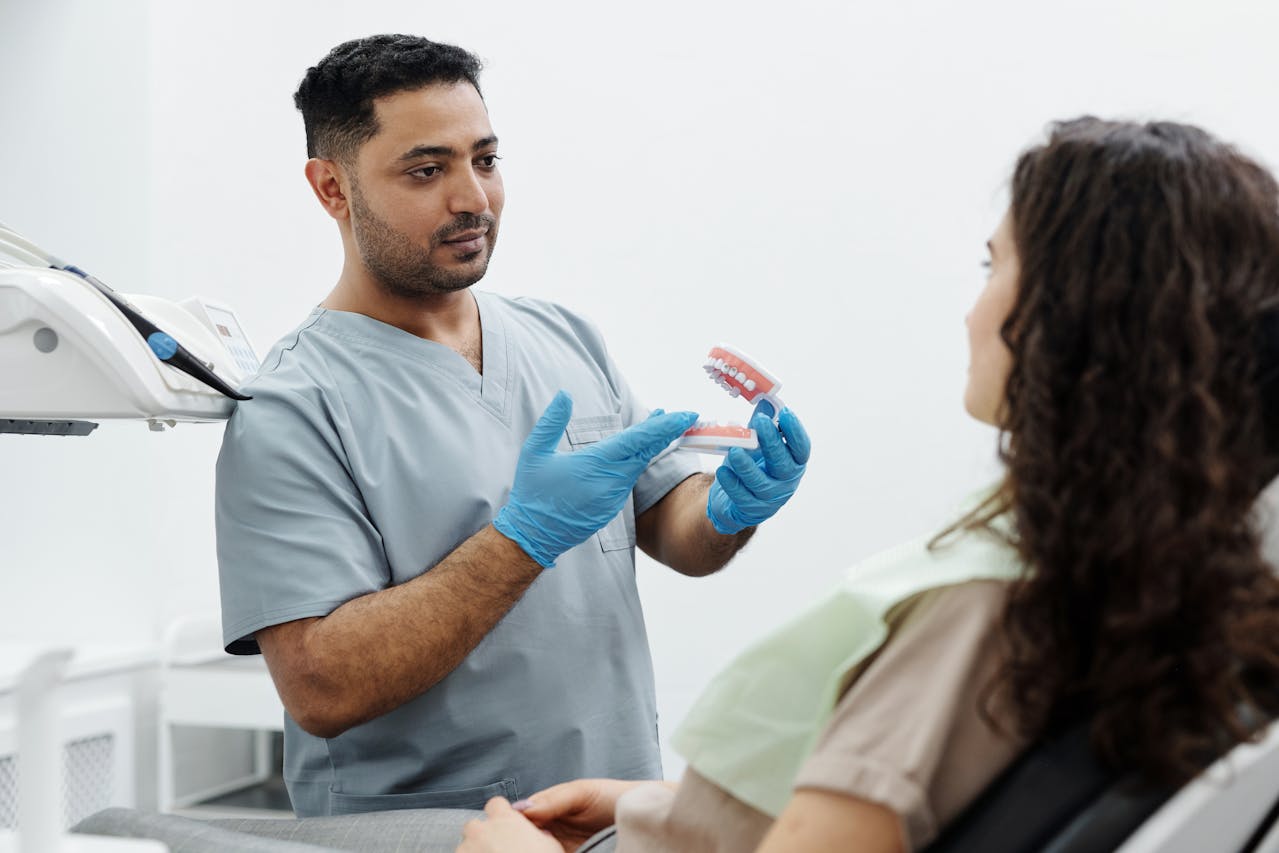How Much Do Dental Clinics Make in Ohio – 2025

Dental clinic revenue in Ohio varies significantly based on multiple factors including location, services offered, and patient volume. Understanding these financial benchmarks helps practice owners and dentists evaluate their performance against industry standards and identify growth opportunities.
Most dental clinics in Ohio generate between $500,000 and $1.2 million annually, with specialty practices often exceeding $2 million in revenue. The state's favorable cost of living and steady patient demand create opportunities for consistent profitability. Revenue potential depends heavily on operational efficiency, service mix, and local market conditions that influence both patient volume and pricing strategies.
1) Average annual revenue of an Ohio dental clinic is over $1 million
Ohio dental practices typically generate substantial annual revenues that align with national averages. Most dental clinics in the state earn between $600,000 and $1.2 million per year.
The average dental practice brings in just over $1M in annual revenue across the United States. Ohio practices follow similar patterns, with general dentistry offices often reaching or exceeding this benchmark.
Single-dentist practices in Ohio commonly see revenues ranging from $650,000 to over $1 million annually. Multi-dentist practices and specialty clinics typically generate higher revenues due to increased patient capacity and specialized services.
Location within Ohio significantly impacts revenue potential. Urban areas like Columbus, Cleveland, and Cincinnati often support higher revenue practices due to larger patient populations and increased demand for dental services.
Practice size and operational efficiency also influence revenue generation. Clinics with multiple treatment rooms and streamlined scheduling systems can accommodate more patients and increase their annual earnings.
Ohio's stable economy and growing population create favorable conditions for dental practice revenue growth. Many established practices consistently exceed the $1 million revenue threshold through effective patient management and quality care delivery.
2) Dental clinic profits vary widely based on location and services
Location plays a major role in determining dental clinic profitability. Urban practices in high-traffic areas often generate more revenue than rural locations due to larger patient populations and higher service demand.
Dental clinic owner earnings typically range from $150,000 to $400,000 annually. High-traffic urban locations can exceed $500,000 per year, while smaller markets may see lower returns.
The services offered significantly impact profit margins. General dentistry provides steady income, while specialized services like orthodontics or oral surgery command premium pricing.
Patient volume directly affects revenue generation. Practices serving 1,300 to 1,500 active patients typically maintain healthier profit margins than those with smaller patient bases.
Operational efficiency determines how much revenue converts to actual profit. Well-managed practices maintain profit margins between 30 and 40 percent, while less efficient operations may struggle to reach 20 percent.
Market demographics influence pricing strategies. Affluent areas support higher fees for cosmetic and elective procedures, while price-sensitive markets require competitive pricing for basic services.
3) General dentistry clinics typically make between $500K and $1.2M annually
General dentistry practices in Ohio generate substantial revenue through routine dental care services. Most established practices fall within the $500,000 to $1.2 million annual revenue range.
The average dental practice brings in just over $1M in annual revenue across the United States. Ohio practices generally align with this national benchmark.
Practice location within Ohio significantly impacts revenue potential. Urban clinics in Columbus, Cincinnati, and Cleveland typically achieve higher revenue due to larger patient populations and higher treatment acceptance rates.
Patient volume drives most revenue differences between practices. Clinics seeing 15-20 patients daily often reach the upper revenue range, while those with 8-12 daily patients may fall toward the lower end.
Service mix affects total revenue generation. Practices offering preventive care, restorative treatments, and cosmetic procedures typically outperform those focusing solely on basic services.
Established practices with 5+ years of operation generally achieve more consistent revenue within this range. New practices may require 2-3 years to reach these revenue levels as they build patient bases and referral networks.
4) Specialty clinics such as orthodontics generate higher revenue, often exceeding $2 million
Specialty dental practices in Ohio consistently outperform general dentistry clinics in revenue generation. Orthodontic practices saw significant growth in 2024, with 60% reporting increased patient volume and case acceptance rates.
Orthodontic clinics typically generate $2 million to $4 million annually due to higher treatment fees. A single orthodontic case averages $3,000 to $7,000, compared to routine dental cleanings at $100 to $200.
Other specialty practices also command premium pricing. Oral surgeons, endodontists, and periodontists charge significantly more per procedure than general dentists. Root canals, implants, and surgical procedures generate substantial revenue per patient visit.
Dental specialists earn higher average net incomes of $323,780 compared to $170,160 for general dentists. This income difference reflects the specialized training and higher fees these practices command.
Ohio's growing population and increased dental insurance coverage support specialty practice growth. Many patients seek specialized care for complex treatments, creating steady demand for orthodontic and surgical services.
5) Patient volume directly impacts clinic revenue, with busier clinics making significantly more
Patient volume serves as the primary driver of dental clinic revenue in Ohio. Clinics that see more patients each day generate substantially higher income than those with lighter schedules.
A dental practice seeing 30 patients daily will earn far more than one seeing 15 patients. The math is straightforward - more appointments equal more billing opportunities.
Smart patient scheduling solutions help clinics reduce no-shows and maximize their daily patient capacity. These systems prevent revenue gaps from missed appointments.
Busy clinics can spread their fixed costs across more patients. Rent, equipment payments, and staff salaries become more affordable when divided among higher patient volumes.
Ohio dental practices with consistent patient flow maintain steadier cash flow throughout the month. They avoid the financial stress of slow periods that plague less busy clinics.
Revenue per patient remains important, but total volume drives overall profitability. Clinics must balance both metrics to maximize their earnings potential.
High-volume practices often attract better insurance contracts and referral relationships. This creates a positive cycle where busy clinics become even busier over time.
6) Operational costs including staff salaries and equipment affect net income
Operational costs directly reduce a dental clinic's net income. When these expenses increase, profits decrease if revenue stays the same.
Staff salaries represent the largest operational expense for most dental practices. This includes wages for dentists, hygienists, dental assistants, and administrative staff.
Equipment costs include depreciation on dental chairs, X-ray machines, and other medical devices. These expenses appear on income statements as ongoing operational costs.
Operating expenses affect business profitability by reducing the amount of revenue that converts to profit. Ohio dental clinics must carefully manage these costs to maintain healthy margins.
The average expense ratio for dental practices is around 62% of revenue nationwide. This means operational costs consume more than half of total income.
Other operational expenses include rent, utilities, supplies, and insurance. These costs vary by location and practice size but consistently impact bottom-line results.
Controlling operational costs allows dental clinics to keep more revenue as profit. This requires monitoring expenses and finding ways to reduce unnecessary spending.
7) Ohio clinics benefit from the state's relatively low cost of living reducing overhead
Ohio's affordable cost of living creates significant financial advantages for dental practices compared to high-cost states like California or New York. Lower commercial rent, reduced utility costs, and affordable staff wages directly impact clinic profitability.
Dental offices in Ohio typically pay 20-30% less for office space rental than practices in major metropolitan areas. This reduction in fixed costs allows more revenue to flow to the bottom line.
Staff salaries for dental hygienists, assistants, and administrative personnel remain competitive while staying below national averages. Ohio dental practices can attract quality employees without the premium wages required in expensive markets.
The Ohio Department of Health provides funding to several dental clinics to help offset uncompensated care costs. This state support further reduces operational burdens for participating practices.
Lower overhead expenses mean Ohio dental clinics can maintain healthy profit margins while keeping services affordable for patients. The cost savings from reduced rent, utilities, and wages create a sustainable business model that benefits both practitioners and the communities they serve.
8) Average dentist salary in Ohio ranges from $170K to $240K, influencing clinic payroll expenses
Dental clinics in Ohio face significant payroll costs when hiring dentists. General dentist salaries in Ohio average $200,234 per year with total compensation reaching $272,203.
Regional variations affect staffing budgets across the state. Cleveland dentists earn approximately $175,574 in base salary with total pay reaching $235,497 annually.
Toledo offers slightly higher compensation packages. Dentists in Toledo earn around $182,950 in base salary with total compensation of $238,468 per year.
Corporate dental practices show different salary structures. One Health Ohio dentist positions range from $170K to $253K annually, including base salary and additional compensation.
These salary ranges directly impact clinic operating expenses. Payroll typically represents 25-30% of total dental practice revenue, making dentist compensation the largest expense category.
Practice owners must budget accordingly when expanding their dental teams. The $170K to $240K range helps clinics plan staffing costs and determine patient volume requirements to maintain profitability.
9) Private practices in Ohio often see steady revenue growth year over year
Ohio dental practices typically experience consistent revenue increases when they focus on strategic growth planning. Revenue growth should be steady and attainable for practices that want long-term success.
Most dental practices in Ohio see revenue climb as they build their patient base over time. New practices often start slow but gain momentum in their second and third years.
The key to sustained growth lies in tracking the right metrics. Key performance indicators help dental practices make better business decisions that drive revenue increases.
Ohio practices that monitor patient retention, appointment scheduling, and treatment acceptance rates tend to see better financial performance. These metrics directly impact how much money flows through the practice each month.
Private practices in Ohio benefit from stable patient populations and insurance coverage rates. This stability helps create predictable revenue streams that support year-over-year growth.
Practices that reinvest profits into better equipment, staff training, and patient experience improvements often see accelerated revenue growth. These investments pay dividends through increased patient satisfaction and referrals.
10) Insurance reimbursements and patient payment models affect clinic cash flow
Dental clinics face significant cash flow challenges due to delayed insurance payments and unpredictable patient payment patterns. Insurance companies often take 30-90 days to process claims, creating gaps in revenue flow.
Patient payment models directly impact how quickly clinics receive money. Cash-pay models provide faster payments at the time of service, improving cash flow and eliminating long waits for reimbursements.
High-deductible health plans increase patient financial responsibility. This creates another layer of complexity since patients are less predictable than insurance payers when making payments.
Cash flow challenges in healthcare stem from both insurance delays and self-paying patients who may default or delay payments. These fluctuations can cause serious financial strain on dental practices.
Different reimbursement systems create varying impacts on clinic operations. Fee-for-service models provide predictable per-procedure payments, while bundled payment models offer fixed amounts for complete treatment episodes.
Clinics must plan for payment delays and maintain adequate cash reserves. Mixed payment models help balance immediate cash payments with insurance reimbursements to stabilize monthly revenue flows.
Key Factors Influencing Dental Clinic Revenue in Ohio
Several specific factors directly impact how much dental clinics earn in Ohio, with location demographics, insurance partnerships, and service specializations playing the most significant roles. The average dental practice generates around $800,000 annually, but Ohio clinics see substantial variation based on these key revenue drivers.
Location and Demographics
Ohio's diverse economic landscape creates significant revenue differences between urban and rural dental practices. Clinics in Columbus, Cleveland, and Cincinnati typically generate higher revenues due to larger patient populations and higher household incomes.
Urban vs. Rural Revenue Patterns:
- Urban practices: $850,000-$1.2 million annually
- Suburban practices: $700,000-$950,000 annually
- Rural practices: $500,000-$750,000 annually
Demographics directly affect treatment acceptance rates and payment capabilities. Areas with higher education levels and income brackets show increased acceptance of cosmetic and elective procedures.
Ohio's aging population in certain regions creates opportunities for specialized services. Counties with residents over 65 often support practices focusing on restorative and maintenance care.
Competition density varies significantly across Ohio. Rural areas may have limited competition but smaller patient pools, while urban markets offer larger populations with more competitors.
Insurance Participation and Payment Models
Insurance participation rates significantly impact clinic revenue streams in Ohio. Practices accepting major insurers like Anthem, Medical Mutual of Ohio, and Delta Dental typically see higher patient volumes.
Payment Model Impact on Revenue:
- Fee-for-service: Higher per-procedure revenue
- PPO participation: Reduced fees but increased volume
- Medicaid acceptance: Lower reimbursement rates but expanded patient base
Revenue cycle management strategies become crucial for maintaining profitability with insurance participation. Efficient billing and collections processes can recover 15-20% more revenue.
Cash-pay incentives and financing options help practices reduce insurance dependency. Many Ohio clinics offer payment plans or third-party financing to increase treatment acceptance.
Insurance verification and pre-authorization processes directly affect revenue predictability. Practices with strong administrative systems see fewer claim denials and faster payments.
Service Offerings and Specializations
Service diversification significantly impacts revenue potential for Ohio dental clinics. General dentistry provides steady income, while specialized services command premium pricing.
High-Revenue Services:
- Cosmetic dentistry: 60-80% profit margins
- Orthodontics: $4,000-$8,000 per case
- Implant dentistry: $3,000-$6,000 per implant
- Oral surgery: Premium procedure fees
Technology investments in digital imaging, laser dentistry, and CAD/CAM systems enable higher-value services. These capabilities justify premium pricing and attract patients seeking advanced care.
Preventive care programs create recurring revenue streams. Hygiene appointments and maintenance schedules provide predictable monthly income for Ohio practices.
Emergency services and extended hours capture additional revenue opportunities. Many Ohio clinics increase earnings by 20-30% through after-hours and weekend availability.
Trends Impacting Ohio Dental Clinics in 2025
Ohio dental practices face increasing competition from corporate chains while technology adoption becomes essential for maintaining operational efficiency and patient satisfaction. These market forces directly influence practice profitability and growth potential.
Competitive Landscape
Dental Service Organizations (DSOs) continue expanding across Ohio, creating pressure on independent practices. These corporate chains leverage economies of scale to offer lower prices and extended hours.
Independent practices must differentiate themselves through personalized patient care and specialized services. Many successful Ohio clinics focus on cosmetic dentistry, orthodontics, or implant procedures to maintain higher profit margins.
The staffing shortage in dental practices remains critical. Dental hygienists and assistants command higher wages, increasing operational costs for all practice types.
Key competitive factors include:
- Location accessibility and parking
- Insurance acceptance policies
- Weekend and evening availability
- Patient financing options
- Online reputation management
Rural Ohio practices face less DSO competition but struggle with patient volume and recruitment challenges. Urban markets see intense competition but offer larger patient pools.
Technology Adoption and Operational Efficiency
Digital transformation drives operational efficiency in successful Ohio dental clinics. AI-powered diagnostic tools improve treatment accuracy while reducing chair time per patient.
Practice management software streamlines scheduling, billing, and patient communication. Automated appointment reminders reduce no-shows by 15-20% on average.
Teledentistry gains acceptance for consultations and follow-up visits. This technology helps practices serve more patients without expanding physical space.
Essential technology investments include:
- Digital imaging systems
- Intraoral cameras
- CAD/CAM systems for same-day crowns
- Electronic health records
- Patient portal systems
Dental industry innovations in 2025 focus on patient experience and workflow optimization. Practices adopting these technologies report 10-15% revenue increases.
Cloud-based systems enable remote practice management and real-time financial reporting. This flexibility helps owners monitor multiple locations efficiently.
Frequently Asked Questions
Ohio dental clinics generate substantial revenue with general practices averaging over $1 million annually, while specialty clinics often exceed $2 million in yearly earnings. Location, patient volume, and service offerings significantly impact profitability across the state.
What is the average annual revenue for dental clinics in Ohio as of 2025?
General dental clinics in Ohio typically generate between $500,000 and $1.2 million in annual revenue. Most established practices exceed the $1 million mark when operating at full capacity.
Specialty dental clinics earn significantly more than general practices. Orthodontic and oral surgery practices often generate $2 million or more annually.
Revenue varies based on patient volume and service mix. Clinics with higher patient turnover and comprehensive service offerings achieve the upper end of these ranges.
How does the profitability of dental clinics in Ohio compare to national averages?
Ohio dental clinics perform competitively against national averages due to favorable operating conditions. The state offers lower overhead costs compared to coastal markets while maintaining strong patient demand.
Dentist salaries in Ohio average $190,170 annually, indicating healthy practice profitability. This compensation level reflects the financial success of dental practices across the state.
Practice owners benefit from Ohio's relatively stable economy and growing population centers. These factors contribute to consistent patient flow and revenue generation.
What are the primary factors that influence the income of dental clinics in the state of Ohio?
Patient volume serves as the most critical factor determining clinic revenue. Practices with higher appointment volumes generate proportionally more income.
Location within Ohio significantly impacts earnings potential. Urban areas like Columbus, Cleveland, and Cincinnati offer higher patient density and increased revenue opportunities.
Service offerings directly affect profitability margins. Clinics providing cosmetic procedures, implants, and specialty services command higher fees than basic dental care.
Staff efficiency and overhead management influence net profitability. Well-managed practices maintain better profit margins through optimized operations.
Can you detail the range of services that contribute most to a dental clinic's revenue in Ohio?
Preventive care services form the foundation of most dental clinic revenue streams. Regular cleanings, exams, and basic procedures generate consistent monthly income.
Restorative treatments including crowns, bridges, and fillings provide substantial revenue. These procedures typically command higher fees than preventive services.
Cosmetic dentistry offers the highest profit margins for Ohio practices. Teeth whitening, veneers, and smile makeovers generate premium pricing.
Specialty services like orthodontics and oral surgery create additional revenue streams. Many practices partner with specialists or offer these services in-house.
What economic trends have been observed affecting dental clinic earnings in Ohio in the past year?
Dental industry compensation has shifted significantly with practice owner incomes rising by 9% between 2023 and 2024. This growth indicates strong financial performance across the sector.
Patient demand for elective procedures has increased following economic recovery. Cosmetic and specialty treatments have seen particularly strong growth.
Insurance reimbursement rates have remained relatively stable. Most Ohio practices have maintained their fee schedules without significant adjustments.
Labor costs have increased as dental assistants and hygienists command higher wages. This trend has impacted overall practice profitability margins.
How do dental clinic size and location within Ohio impact their financial success?
Multi-doctor practices generate higher total revenue than single-practitioner clinics. These larger operations benefit from economies of scale and increased patient capacity.
Metropolitan areas offer greater earning potential due to population density. Cleveland, Columbus, and Cincinnati practices typically outperform rural counterparts.
Suburban locations often provide the optimal balance of patient volume and operating costs. These areas offer strong demographics without downtown overhead expenses.
Rural practices may serve larger geographic areas but face challenges with patient volume. However, they often operate with lower overhead costs and less competition.









